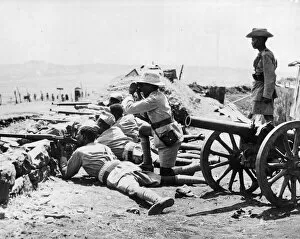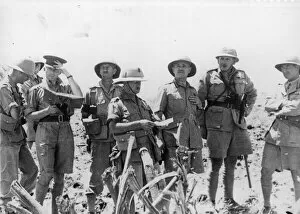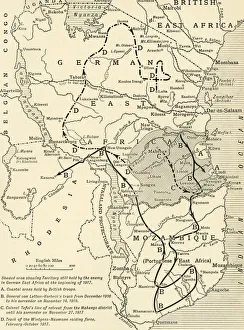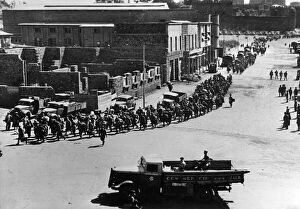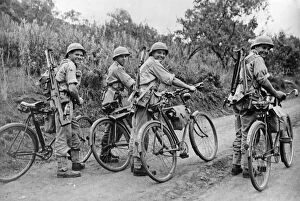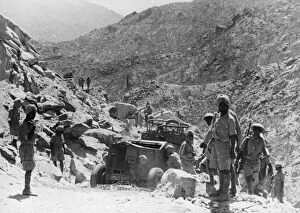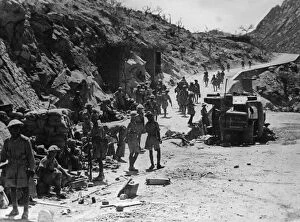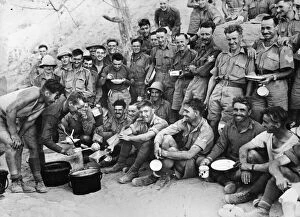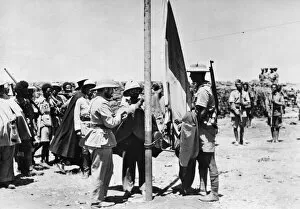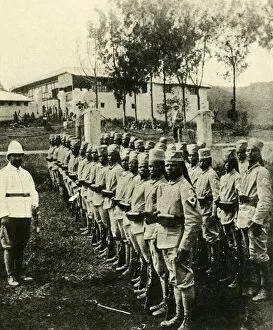East African Campaign Collection
"The East African Campaign: A Journey of Triumph and Resistance" This captivating image, a map illustrating the Closing Phases of the East African Campaign, 1917-18
All Professionally Made to Order for Quick Shipping
"The East African Campaign: A Journey of Triumph and Resistance" This captivating image, a map illustrating the Closing Phases of the East African Campaign, 1917-18, (c1920), takes us back to an era where history was being rewritten on the vast landscapes of East Africa. It showcases the relentless determination and bravery displayed by both Allied and Axis forces during World War I. Scenes inside Dambacha Fort after it was captured by patriots of Abyssinian Emperor Haile depict a significant turning point in this campaign. The fort's fall marked a momentous victory for Ethiopian resistance fighters against foreign occupation. The Campaign in German East Africa, 1917, immortalized by an unknown creator, reminds us that even amidst war, humanity can be found. Here we witness African soldiers fighting for Germany - individuals caught between loyalty to their homeland and allegiance to their colonial rulers. Revolt Leaders in Abyssinia (Ethiopia) capture our attention as British officers venture into uncharted territories to establish alliances with local leaders. This collaboration would prove vital in securing victories against common enemies. British forces' triumphant entry into Addis Ababa on April 5th symbolizes their remarkable achievement - covering over 1800 miles through treacherous terrains within a short span. Their unwavering commitment paved the way for liberation from oppressive regimes. Italian prisoners being marched through Gondar after its surrender to British exemplifies how fortunes shifted dramatically during this campaign. Once captors turned captives themselves; they became living testaments to resilience prevailing over tyranny. Fast forward two decades later, when British forces entered Addis Ababa once again on April 5th, 1941 - advancing more than 1800 miles towards freedom from fascist rule under Mussolini's Italy. This triumph stands as a testament to collective efforts aimed at restoring peace and justice. Amidst all these scenes of conflict and conquest, the Post Office emerges as a symbol of unwavering service and resilience.


